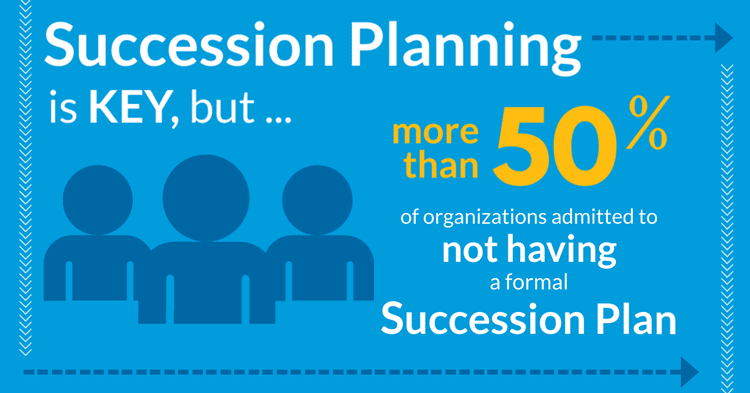Avoiding the “S” word is nothing new. In fact, in a recent American Hospital Association (AHA) survey, 49 percent of hospital boards confessed that they did not have a formal CEO Succession plan. And this is not unique to hospital boards. A survey done by the National Association of Corporate Directors revealed that 55 percent of organizations had informal succession plans and 6 percent had no plan at all.

So if you don’t have a plan, you’re not alone. Don’t let that comradery fool you, though. Organizations lacking a formal succession plan sacrifice long-term success to avoid, in the short term, an awkward or tough conversation. Sure, if you’re onboarding a new CEO, that’s a great time to establish a succession plan, but what if your CEO has been in place for five years, fifteen years, or longer? Tackling that conversation can strike some very emotional cords. Try framing that conversation in terms of organizational health.
Organizations that implement succession planning:
Many organizations freeze when it comes to taking the first step. As an added challenge, Boards often don’t have a lot of experience, if any, undertaking planning of this magnitude. One important thing to keep in mind is that it is not imperative to start with the CEO, especially if she has built a significant legacy.
What is imperative is that you have support and buy-in from the top. Starting one level down with the Executive Leadership Team (ELT) can be a comfortable way to begin engaging your CEO. Then, at some point the conversation may organically lead to a discussion of her plans for the future.
Some organizations have pieces of a succession plan in place or, as the research cited above notes, what is in place is more informal. One exercise that our clients find helpful is doing a quick audit of where you stand today. This allows you to take stock, identify gaps, and design a plan for moving forward.
We’ve done our best to replicate that exercise in this Succession Assessment tool. After answering a series of questions, you’ll receive a report outlining your strengths and areas for improvement. This snapshot allows you to take your succession management to the next level.
Before you know it, you’ll be touting your succession-driven culture as the key to your overwhelming success!
Access all our published articles, eBooks, webinars and more.